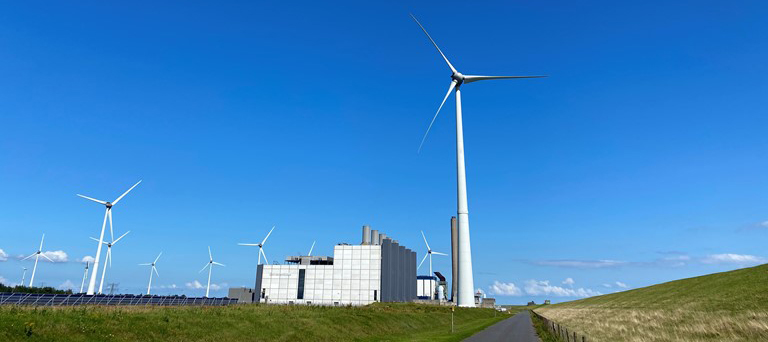
Listen to Engineering Angles, Tractebel's podcast!
In the latest episode of Engineering Angles, we caught up with Neha Bansal, Deputy General Manager of Hydropower & Water Resources in Business Development &...
Trouver plusIn the race against the clock to decarbonize energy production on a global scale, hydrogen is an important vector of the energy transition. Tractebel is involved in the technical specifications of HyNetherlands, a strategic green hydrogen gigawatt-scale project in the Dutch province of Groningen.
The possibilities of hydrogen are limitless. Its vast potential across sectors as a lower-carbon energy alternative makes it a pivotal fossil fuel replacement in the fight against climate change. As a game changer for reducing emissions, green hydrogen projects are on the rise worldwide.
Tractebel to perform functional specifications in GW-scale green hydrogen value chain HyNetherlands
Tractebel’s multidisciplinary experts were initially called upon by the ENGIE teams in 2019 to perform the feasibility study for a 100 MW green hydrogen plant, the first phase of the GW-scale HyNetherlands project. Our hydrogen experts are now supporting ENGIE further by optimizing the facility design to satisfy functional requirements at the lowest lifecycle costs and developing the functional specifications for tendering.
The site, located at Eemshaven in the Dutch province of Groningen, will derive electricity for hydrogen production from nearby renewable power sources such as offshore wind. The commercial operation date (COD) of the first 100 MW is planned for 2025 and HyNetherlands is expected to be scaled up to GW capacity in the future.
Fossil fuels gone with the wind in the Netherlands
HyNetherlands is among the first green hydrogen plants of this magnitude to be developed in Europe. The energy it produces is earmarked in part for the transport sector, namely to replace diesel with hydrogen fuel cells in the northern Netherlands’ passenger rail network. Plans are in place to store energy for use when renewable sources like wind are not producing sufficient electricity: hydrogen can be stored in the grid (linepack) or in salt caverns in Zuidwending, Groningen.
What is hydrogen and why is it so important?
ENGIE has positioned itself as a major player in renewable hydrogen and operates along the entire length of the hydrogen value chain – from production of renewable energies to end uses:
Green hydrogen is an essential component of the energy mix. It can be used to decarbonize industrial activities, to store energy and make it available when renewables are not producing electricity and to develop more sustainable forms of mobility.
Green hydrogen, which is mainly produced by water electrolysis using renewable electricity, is one of the levers that will speed up the transition to a carbon-neutral future: development of green mobility, decarbonization of large-scale industrial activities (fertilizers, refineries, chemicals, etc.), improved integration of intermittent renewable energies into the energy system and massive storage of the surplus electricity generated.
Usable in addition to all green energies to satisfy and decarbonize many activities, hydrogen can become the pillar of 100% renewable regions.

The Eems power plant, site of the HyNetherlands hydrogen project.

In the latest episode of Engineering Angles, we caught up with Neha Bansal, Deputy General Manager of Hydropower & Water Resources in Business Development &...
Trouver plus
Tractebel asssite ENGIE pour construire son deuxième parc de batteries à grande échelle en Belgique, contribuant ainsi à la mise en place d'un système énergétique flexible,...
Trouver plus
Our Urban teams from France and Monaco are leading the design and construction supervision of the Mediterranean Pavilion, ahead of the third United Nations Ocean...
Trouver plus
Our transport infrastructure experts signed a mandate on April 25, 2025, to provide technical services on the first metro project in the Western Balkans. This is our...
Trouver plus